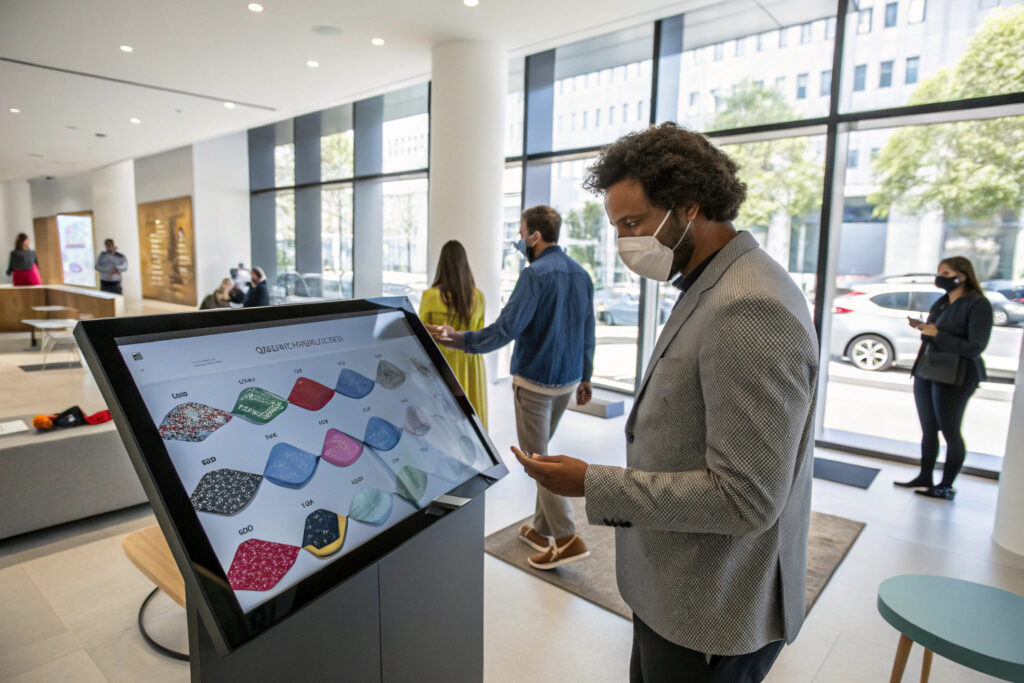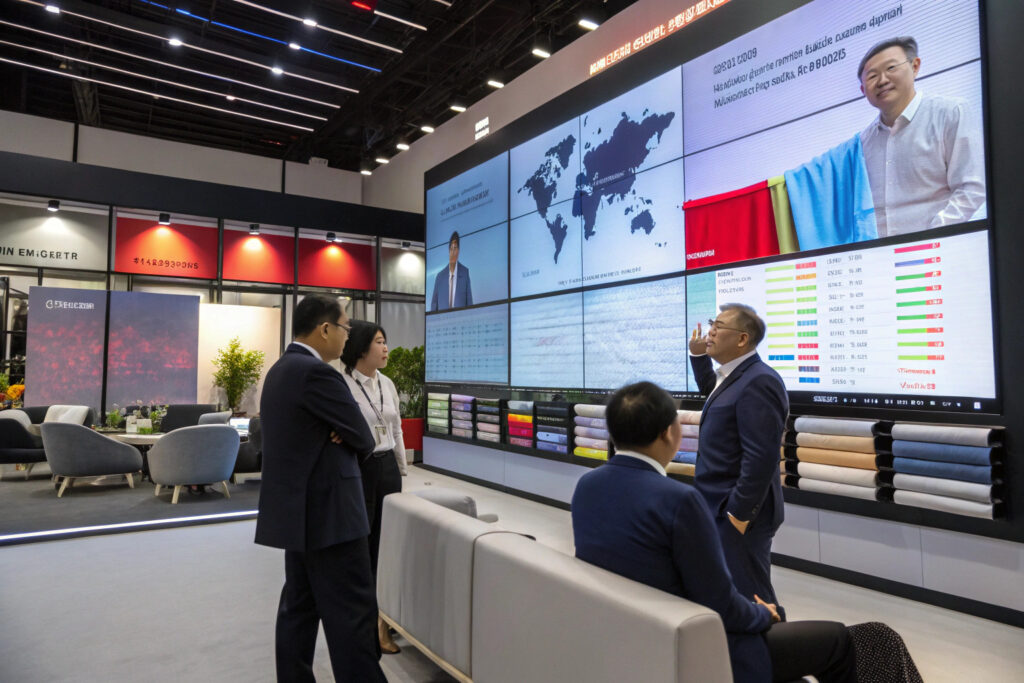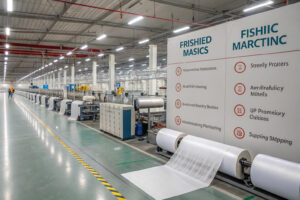In today’s global supply chain, digital tools have changed the way fabric mask sourcing works. From real-time inventory to interactive virtual showrooms, buyers no longer need to rely solely on physical visits or long email threads. Instead, they can preview product lines instantly, check stock levels on demand, and confirm delivery timelines with one click. This shift has made sourcing faster, more transparent, and cost-effective.
For global buyers, especially those in the U.S. and Europe sourcing from Asia, using digital platforms means bridging time zones, reducing guesswork, and cutting unnecessary waiting periods. At Global-Caps, we’ve integrated virtual showrooms, live inventory dashboards, AI-powered sourcing, and secure payment gateways into our process—offering end-to-end visibility from prototype to shipment.
With these tools, I’ve personally seen clients cut sourcing times by up to 40%, avoid stockouts during peak seasons, and negotiate more confidently thanks to transparent data. Let’s explore how each of these digital solutions plays a role.
Why Are Virtual Showrooms Essential for Global Buyers?
Virtual showrooms let global buyers walk through a supplier’s product range without stepping into a factory. By combining 3D modeling with real-time video streaming, these tools provide an experience that’s as close as being there in person.
Instead of static photos, buyers can rotate masks, zoom into stitching, and even watch live demonstrations from the production floor. This is especially useful for custom orders, where visual confirmation of colors, textures, and trims is crucial before mass production begins.

By using these tools, buyers save travel costs and still enjoy direct interaction with sales teams. Suppliers benefit too—since they can update the showroom instantly to showcase new arrivals or seasonal designs, ensuring buyers always see the most relevant options.
How Can Buyers Validate Quality Without Physical Samples?
One way is to combine high-resolution close-ups with detailed fabric composition reports. For example, we often share testing data alongside the showroom display, allowing buyers to verify breathability and colorfastness before approving bulk production. Platforms like Matterport make this virtual inspection process realistic and interactive.
What Are the Best Practices for Custom Order Reviews?
For custom orders, hosting a live video walkthrough with your production team inside the showroom can eliminate misunderstandings. Tools like Zoom allow buyers to give real-time feedback on pattern adjustments, logo placement, and packaging mock-ups—reducing costly post-production changes.
How Does Live Inventory Tracking Reduce Delays?
Live inventory tracking offers something no spreadsheet can—instant accuracy. By linking our warehouse management system to an online dashboard, buyers can see exactly how many pieces are in stock, which colors are running low, and when replenishments will arrive.
For example, during peak winter mask demand in Europe, a U.S. buyer spotted a sudden drop in available black ski masks. Because of the alert from our system, they placed an urgent order, securing supply before competitors even noticed the shortage.

This transparency also improves planning. Buyers can schedule shipments in advance, avoid overstocking, and even reserve production slots months ahead.
How Can QR Code Tracking Improve Accuracy?
Every mask batch we produce comes with a unique QR code. By scanning it, buyers can access full product specs, quality test reports, and shipment status. Platforms like Fishbowl Inventory integrate this data seamlessly for both sides.
What’s the Role of Predictive Analytics in Stock Planning?
Using predictive analytics, we can forecast demand spikes and suggest pre-orders. For instance, tools like Netstock help us model seasonal patterns, ensuring no buyer faces a sold-out situation during high-demand months.
Can AI-Driven Sourcing Platforms Improve Quality?
AI sourcing platforms do more than match buyers with suppliers—they optimize supplier selection based on performance, certifications, and historical quality scores. At Global-Caps, our AI system ranks potential partners for each order based on factors like on-time delivery, defect rates, and pricing stability.
This means a buyer searching for odor-resistant sports masks will instantly see a shortlist of pre-vetted factories with proven track records, saving weeks of manual research.

AI also helps detect potential risks early, like raw material shortages or currency fluctuations, giving buyers a chance to adjust plans proactively.
How Can AI Reduce Defect Rates in Fabric Mask Orders?
By analyzing historical inspection data, AI can pinpoint recurring defects and suggest process changes. For example, Inspectorio offers cloud-based quality monitoring that cuts defect rates by as much as 30% in our partner factories.
Can AI Help Verify Sustainability Claims?
Yes. AI tools like SupplyShift can track and verify sustainability metrics, ensuring that recycled fabrics meet global standards—helping buyers avoid greenwashing risks.
What Payment & Logistics Tools Enhance Efficiency?
Payment and logistics are the final steps that can make or break a sourcing experience. Digital tools now make these stages faster, safer, and more transparent.
Instead of waiting days for bank confirmations, buyers can use secure platforms like Wise Business or Payoneer to transfer funds instantly, while built-in compliance checks prevent delays.

On the logistics side, real-time shipment tracking lets buyers follow their orders from our Keqiao warehouse to their U.S. fulfillment center without a single phone call.
How Can Buyers Avoid Delays at Customs?
Using digital customs clearance tools, like Kewill Customs, ensures all paperwork is filed correctly before the shipment arrives. This prevents last-minute clearance issues and costly storage fees.
What Are the Best Tools for Multi-Modal Shipment Tracking?
Platforms like FourKites consolidate data from sea, air, and land carriers, giving buyers a single dashboard to track complex shipments—reducing the risk of miscommunication between multiple freight providers.
Conclusion
Digital tools are no longer optional—they’re a necessity for anyone serious about efficient, transparent, and profitable fabric mask sourcing. From virtual showrooms that bring products to your desk, to AI-driven sourcing that ensures quality, and real-time inventory systems that keep you ahead of demand, the benefits are clear.
If you’re ready to streamline your sourcing and gain a competitive edge, partner with us at Shanghai Fumao. We specialize in turning ideas into reality with precision, speed, and transparency. Contact our Business Director Elaine at elaine@fumaoclothing.com to start developing your custom fabric mask order today.


























